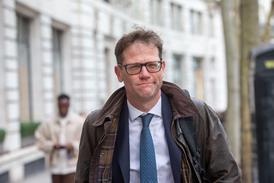Our criminal justice system must be fit for a digital age.
The lord chief justice has warned that the issue of disclosure of online material is ‘probably the biggest problem that the common law justice system faces’.
Lord Thomas was speaking at an event to launch a book on sexual offences. He talked about the amount of court time now taken up by such cases and the impact of ‘sexting’ and social media. Of particular concern was the trend for explicit material of people’s sexual encounters to be stored on phones and posted online. Not only does this raise new and significant issues in relation to disclosure, he argues, but it also adds an onerous dimension to weighing the evidence in trials.
The LCJ is correct to lament the enormous quantity of personal data on smartphones and social media platforms. When that information concerns our intimate relationships we know – or should know– that there is always a risk that it will no longer remain private once we press ‘send’. To some of us the very idea fills us with horror. The dissemination of the information without permission is deplorable and may be illegal (for instance, by disclosing private sexual photographs and films with intent to cause distress – section 33(1) of the Criminal Justice and Courts Act 2015). Similarly, an intimate picture of a child under 18, even if sent to another child under 18, will on the face of it be an illegal indecent image of a child.
But I am not as pessimistic as the lord chief justice regarding the impact of this material on sex trials and his concerns about the quality of evidence we provide to juries. By the very nature of such alleged offences, most defendants and complainants face trial with very little evidence to draw on to support their case. Often, allegations are historical. Even those proximate in time suffer from the loss of CCTV evidence automatically overwritten within a month of the recording. There is often a lack of forensic evidence to corroborate the account of the complainant or defendant.
However, what is likely to still exist are megabytes of stored information: telephone records, text messages, emails and photographs on handsets, computers and other social media platforms. These are all forms of real evidence. They can provide context, factual information and colour regarding what happened before, during and after the interaction which is the subject of a trial. It is difficult to see how making evidence which has probative value available to a jury might fail to meet the interests of justice.
It is correct that managing this data is a specialised forensic task to be undertaken by those who are properly trained, accredited and accountable to the court as experts. This is perhaps what we had in the government-run Forensic Science Service, which closed in March 2012.
Since then the task has shifted to local police forces. In the absence of uniformity, individual forces have used local arrangements where the task is (at best) outsourced to private commercial providers or (at worst) undertaken by police officers who have received minimal training. With the additional budgetary constraints on the police they sometimes, despite best intentions, struggle to produce forensically sound work in a timely manner. This is perhaps a central reason for the challenges posed by this type of evidence and the resultant risk to sex trials.
Huge sums have been invested to modernise the administration of criminal justice to keep up with our digital age. Increasingly, courtrooms and jury benches are equipped to deal with data, images and a myriad of technologies that allow the wheels of justice to turn. However, more needs to be done to ensure criminal trials are fit for a digital age. In short, we need a criminal justice system where the defence, prosecution and the judiciary are properly resourced and digitally proficient to ensure we can deliver fair trials for the citizens of our times.
Sandra Paul is a partner in the criminal litigation team at Kingsley Napley

















![David Lester (senior partner at Blythe Liggins), Darryl Barnes, Jagdeep Sandher (head of dispute resolution at Blythe Liggins)[4]](https://d1d8vslyhr7rdg.cloudfront.net/Pictures/274x183/4/2/8/116428_davidlesterseniorpartneratblytheligginsdarrylbarnesjagdeepsandherheadofdisputeresolutionatblytheliggins4_981603_crop.jpg)









No comments yet